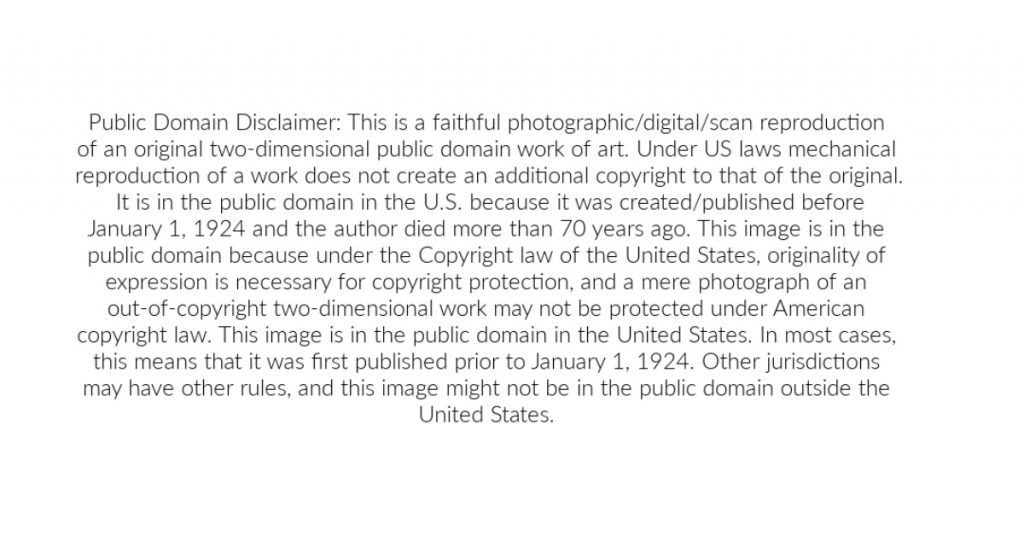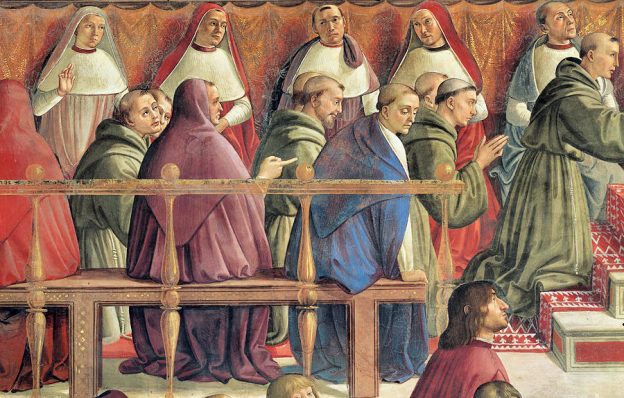
FEATURE image: Detail from St. Francis Receiving the Franciscan Order from Pope Honorius III by Domenico Ghirlandaio (1449-1494). The fresco, painted in the mid1480s (1483-85), was originally for Santa Trinita in Florence, Italy. It is today in the Piazza della Signoria in Florence. Ghirlandaio’s complete fresco image is included in this post below.

Giotto (1267-1337), St. Francis with two men (detail), 1297-1300, Upper Church, Basilica di S. Francesco, Assisi, Italy.
By John P. Walsh
A plenary indulgence in the Roman Catholic Church wipes clean all punishment for sins during a person’s entire lifetime. For something that may assure a soul is heaven bound, there are specific and precise earthly requirements to be followed. A plenary indulgence means that the punishment for sins that could well be experienced on earth or after death in purgatory are expiated or removed. A plenary indulgence stands in contrast to the more common partial indulgences which are less comprehensive and come in a far broader range.
The plenary indulgence granted by the Pope in 1216 to the Portiuncula, a lowly Franciscan chapel outside Assisi — the so-called Portiuncula Indulgence — is remarkable in church history. As with most things associated with the life of St. Francis of Assisi (c.1181-1226), the episode turned the church’s indulgence system on its head. The new pope, Honorius III (1150-1227, reign 1216-1227), who followed the powerful and influential Pope Innocent III (reign, 1198-1216), was asked by St. Francis himself for the plenary indulgence linked to the Portiuncula, the one-room chapel given to the Franciscans and the central place for many of their founder’s most profound religious experiences.
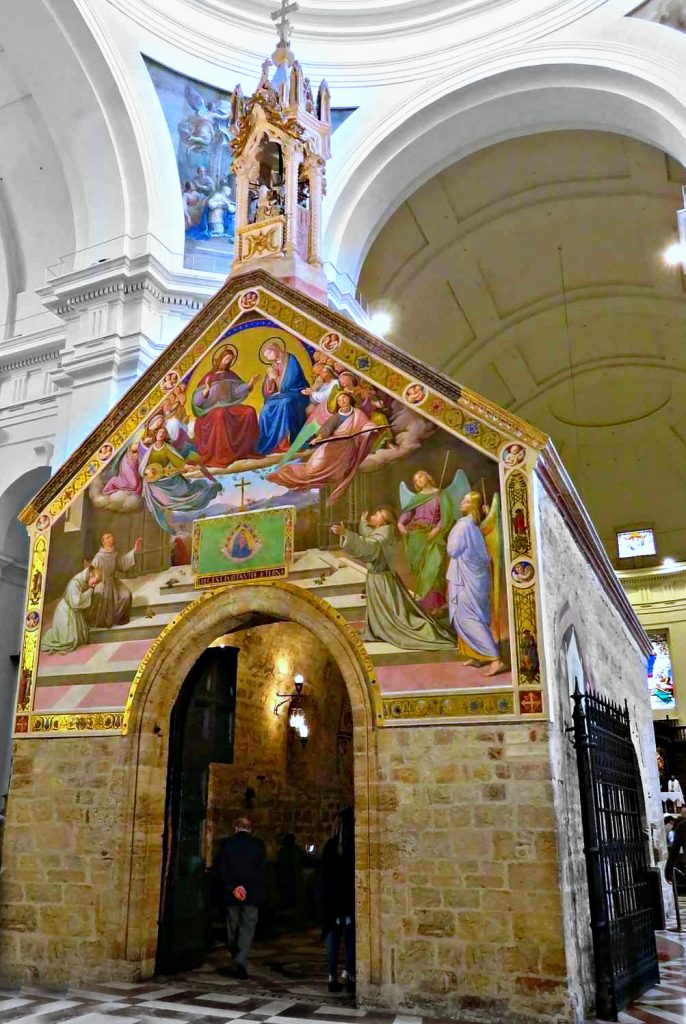
The Portiuncula (or “Little Portion”) is a 9th century chapel given to the Franciscans by local Benedictine monks. It was here that St. Francis of Assisi received his calling to be a mendicant or beggar following in the footsteps of Jesus Christ. Since the mid-17th century it has been enshrined within a massive basilica in Assisi called Santa Maria degli Angeli (“Our Lady of the Angels”).
Honorius III listened to the little poor man Francis and expressed extreme reluctance to grant his request. How could the mighty church bestow its fullest plenary indulgence on an obscure, rundown 180 square foot chapel when a holy place such as that might normally receive only a partial indulgence? Churches, usually at their dedication, would gain a partial indulgence of days or perhaps a year or two. The Portiuncula Indulgence which begins each year at sunset on the evening of August 1 and extends until sunset of the following day, is a plenary (or lifetime) indulgence that was approved at the highest levels of the church by virtue of St. Francis of Assisi’s bold request. The saint always insisted it was not he, but Jesus Christ Himself who was asking for the plenary Portiuncula Indulgence.
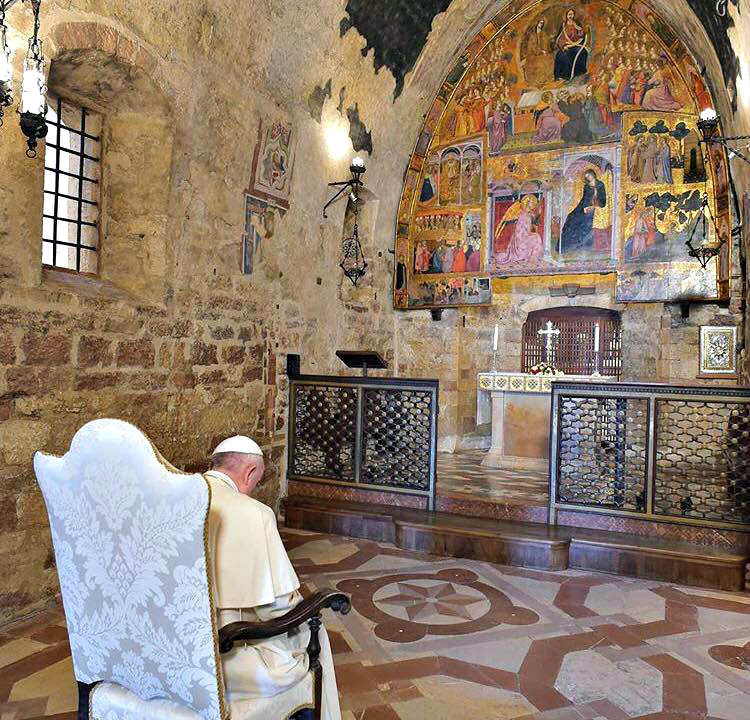
Pope Francis who when elected in 2013 took his name from St. Francis of Assisi sits inside the Portiuncula chapel during his visit to Assisi in 2016 for World Day of Prayer For Peace.
In the early 13th century the church’s only plenary indulgence was for the Crusades in the Holy Land — at first for the Crusaders themselves and later for those who provided their spiritual and material support. Interestingly, the distribution of and sharing in this sole plenary indulgence had been granted to the Franciscans. The new order (1209) which started in Assisi under St. Francis had quickly spread not only throughout Europe in Francis’s lifetime but the known world. The Franciscan Order would soon embrace both men and women, religious and laity. St. Francis’s own vocation started dramatically in 1208 at the Portiuncula, the tiny dilapidated chapel on a wide plain below Assisi, no more than an hour’s walk from the hill town’s main square.
Francis’s request to the pope who was holding court in Perugia was a bold one. The pope greatly hesitated; then assented. The cardinals and the Curia—as well as the local bishops—were opposed to the idea of a plenary indulgence for the Portiuncula. Francis’s “Little Portion” was just that and unworthy of the church’s fullest indulgence especially as an international banking system was watching and to which the church had become increasingly aligned. Unable to quash outright the Poverello’s request with its papal approbation, the cardinals and Curia worked successfully to limit its temporal parameters, that is, allowing the plenary indulgence for the Little Portion to work for the littlest of time. The plenary indulgence would be one day each year, from sunset of August 1 to sunset of August 2. This has remained its arrangement for more than 800 years.

St. Francis Receiving Confirmation of the Franciscan Order from Pope Honorious III, by Domenico Ghirlandaio (1449-1494), originally in a central position in the Santa Trinita, Florence, Italy. It is housed today at the Piazza della Signoria. The approval of the Franciscan order by Honorius III depicted in this fresco occurred in 1223 which was about 7 years after the Portiuncula Indulgence, This late 15th-century art work provides insight into the almost public event that any papal encounter entailed.
To acquire any plenary indulgence including the Portiuncula Indulgence requires taking action regarding the work to which the indulgence is attached -– in this case, it began with pilgrimage to the Portiuncula in Assisi. It also means fulfilling three more conditions. The applicant must (1) make a sacramental confession, (2) receive holy communion, and (3) pray for the intentions of the pope. To acquire a plenary indulgence also means that not even the smallest attachment to any sin is permitted.
After their meeting in 1216 the pope offered Francis the appropriate paperwork for his extraordinary indulgence but like many times before and on integral events in the life of the Franciscan Order, Francis waved it off. This great saint concluded that even church documents could be superfluous to the actual manifestation of God’s work.

Simone Martini (c. 1285-1344), St. Francis with the Stigmata, Basilica di San Francesco, Assisi, Italy.
After St. Francis died on October 3, 1226 at the Portiuncula, its plenary indulgence’s lack of a contemporary document and continued animosity from grandiose church figures led early Franciscans to not highlight the privilege. By the 1270’s with the last of the Franciscans who personally knew Francis dying off, those brothers who had been at Perugia in 1216 to witness the Portiuncula indulgence set about making notarized statements attesting to its veracity.
In this first quarter of the 21st century Franciscans and other pilgrims continue to arrive to Assisi in a constant stream as they have since the 13th century. Their visits often include traveling the short distance to the Portiuncula which is the spiritual home of St. Francis and the Franciscan movement, all of which has made a noteworthy impact on world history. But not every visit— especially among 13th century Franciscans—provides easy historical documentation of their witness to the Portiuncula’s plenary indulgence in August.
In a certain way, the origin of the Portiuncula indulgence attributed to St. Francis is shrouded in history as much as possibly legend. In 2019 the Portiuncula indulgence will be in effect, as it has since 1216, from the evening of August 1 to that of August 2.
In addition to the sacramental requirements, its plenary indulgence may be received by visiting any Franciscan church in the world and that the pilgrim— in the spirit of St. Francis of Assisi— has that tiny terra sancta called the Portiuncula uppermost in mind so that out of that place its graces may flow.
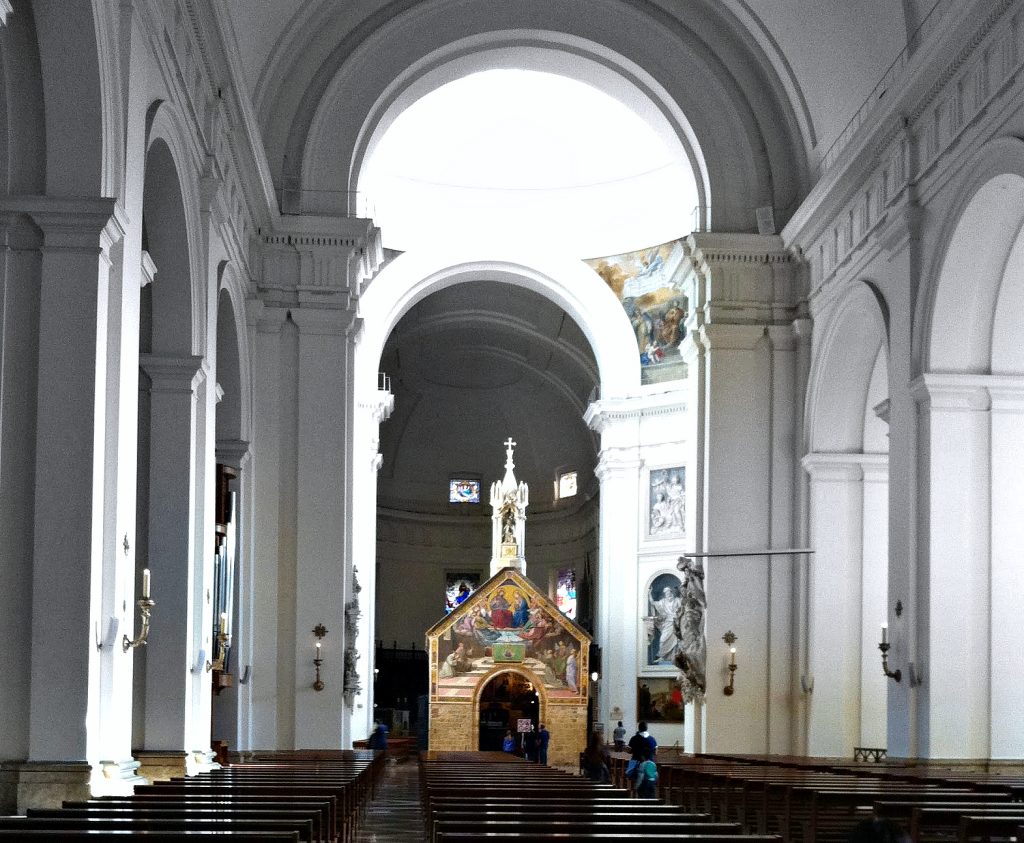
SOURCES:
St. Francis of Assisi, Johannes Jörgensen, translated from the Danish with the author’s sanction by T. O’Conor Sloane, Image Books in association with Longmans, Green & Company, Inc, 1955.
Manual of Indulgences, USCCB Publishing, 2006.
Civilisation, Kenneth Clark, Harper & Row Publishers, New York and Evanston, 1969.

